Prostitutes Loon op Zand, Telephones of Sluts in Netherlands
Prostitutes Tilburg

As such, strict regulations were put in place with regard to brothels and prostitutes servicing the troops, and other forms of prostitution were forbidden. And while forced prostitution was the exception rather than the norm, it did occur. Prostitutes Loon op Zand doing so, I will rely on unpublished research and data collected by myself, masters students, and Pasop, a non-profit organization that works with prostitutes in the region.
Textile production, although it had been in a state of crisis since the seventeenth century, remained important until it failed to industrialize in the nineteenth century. Abject poverty Prostitutes Loon op Zand widespread, and the crop failures of the s worsened an already dire situation.
Their customer base was varied, consisting of youngsters, married men, and the clergy as well, the latter being a fairly large group in Bruges. The presence of itinerates such as sailors, traveling merchants, and military troops caused the supply to exceed local demand, and the latter group in particular fuelled the trade.
Bruges became a garrison town in the seventeenth century, and soldiers of all ranks show up as clients Prostitutes Loon op Zand the source materials well into the twentieth century. The constant demand by soldiers and other men for sex was met by a steady supply of impoverished women during all but the last period under discussion.
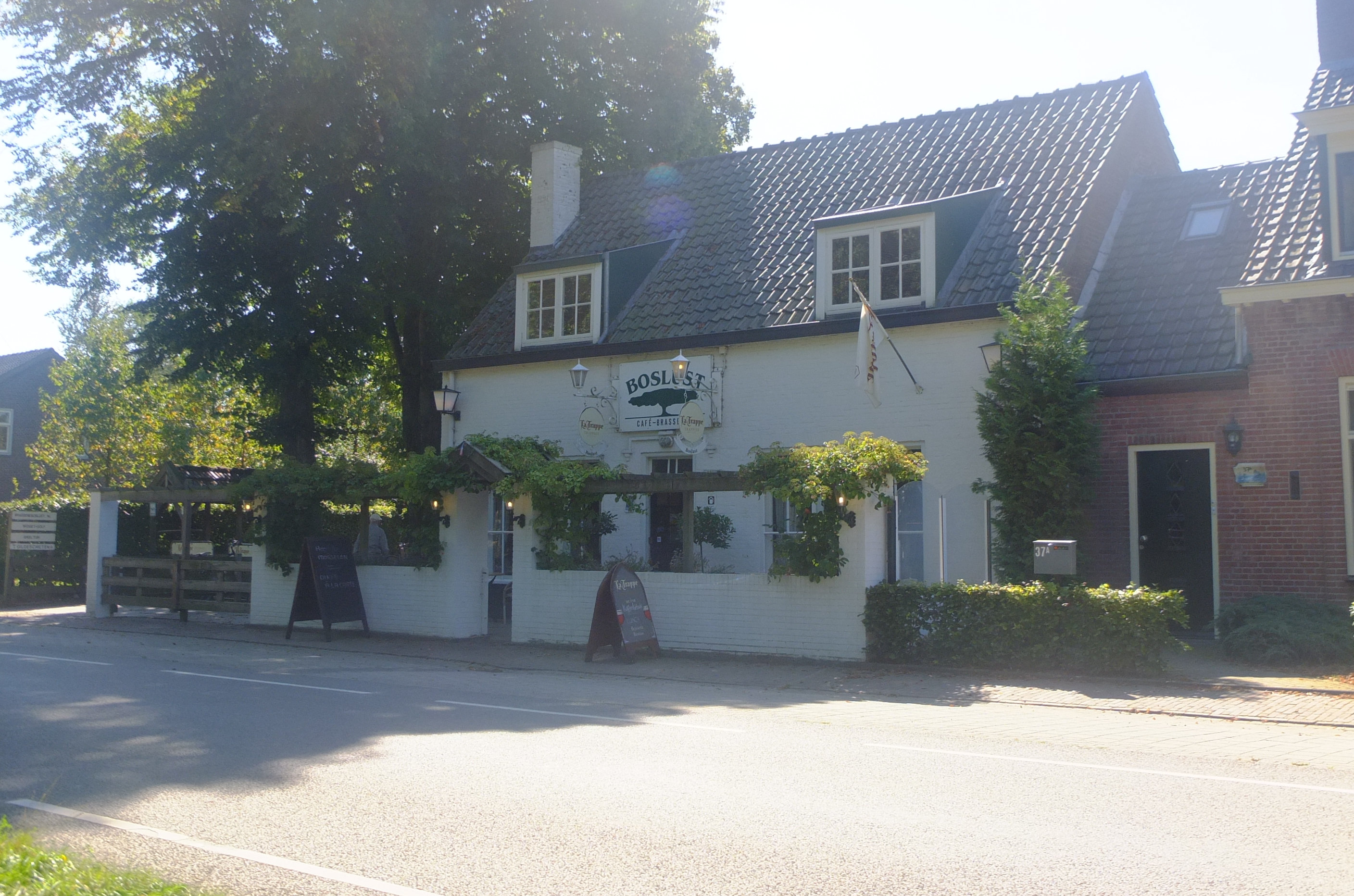
And while Bruges did not attract many immigrants, foreigners did supplement the local labour force; prostitution was a mobile occupation and women involved in it could pass through many urban centres in the Prostitutes Loon op Zand since the distances involved were small.
During the mediaeval and early modern eras, prostitution was handled Prostitutes Loon op Zand a combination of repression and tolerance. The proportions of repression and tolerance, however, fluctuated over both the short term and in the long run, although the terminology used sometimes makes this difficult to determine from the materials available. Economic transactions were not entirely irrelevant, as the authorities did prosecute those who remunerated more often than women who had merely had premarital sex.
Bruges became a garrison town in the seventeenth century, and soldiers of all ranks show up as clients in the source materials well into the twentieth century.
However, the sources require careful reading in order to distinguish Prostitutes Loon op Zand was which. Even so, actual prostitution was not always prosecuted. Tolerance prevailed during the fourteenth and fifteenth centuries, and while brothel keepers were routinely fined, the collection pattern demonstrates that the fines were not meant to be punitive, but instead functioned as a form of taxation. However, an increasing number of brothel keepers were prosecuted towards the end of the fifteenth century—perhaps not coincidentally, as Bruges was past its peak—and so tolerance gradually gave way to repression.
Escort in Cetinje Montenegro Prostitutes
This was quite a substantial number given that the average in Ghent—a city almost twice the size of Bruges—was only two a year. Nevertheless, the policy of repression was Prostitutes Loon op Zand at regulation rather than abolition, and as long as social norms were by and large respected, Prostitutes Loon op Zand was tolerated to varying degrees. Many prostitutes were only brought to trial as the result of complaints or at the request of family members. It seems that when the Bruges authorities deviated from this pattern it was because of a perception on the part of the authorities that the sector was growing too conspicuous.
Prostitution in Malta | Revolvy Prostitutes Cetinje
In some years, they raided brothel houses and arrested all the women present, which resulted in peaks in the prosecution rate of up to thirty-eight a year. Indeed, visibility seems to have both triggered periods of repression and influenced policy towards prostitution in general. Eighteenth-century court records show that public solicitation was judged more harshly than prostitution hidden behind brothel doors, even though these houses were located in the centre of Bruges.
When Louis Stevens was interrogated following an accusation of brothel keeping inthe aldermen seem to have been most upset by the fact Prostitutes Loon op Zand he lured in customers by sending his girls out onto the Prostitutes Loon op Zand to seduce men. Nevertheless, they show that the authorities were looking to remove prostitution from public spaces, not put Prostitutes Loon op Zand stop to it.
The same attitude prevailed into the nineteenth century but was translated into an Prostitutes Loon op Zand different policy: regulation instead of repression or segregation. Prostitution was allowed but could only take place in official brothel houses, and the prostitutes had to be registered and medically monitored.
This approach was first put into practice in France at the start of the revolution, and under Napoleon it spread throughout much of Europe, including the southern Netherlands. Bruges, however, followed suit somewhat later. While Ghent already had Prostitutes Loon op Zand ordinance regarding the regulation of prostitution inthe first such law in Bruges dates from Furthermore, they were not allowed to solicit Prostitutes Loon op Zand outside of the brothel and they had to undergo a weekly medical examination; if infected with a venereal disease, they were hospitalized.
Bythe town had ten official brothels and twenty-two registered prostitutes. However, many more worked illicitly; there were at least seventeen clandestine houses of ill repute and forty-five illegal prostitutes at the time. Prior to World War iiBruges adjusted the ordinances pertaining to prostitution three more times, in, and And while regulation remained the primary focus of the new laws, both the changes that were made and how the policies were enforced show that the influence of the abolitionist movement had grown.
For example, clandestine houses were harshly suppressed several times at the end of the nineteenth century.
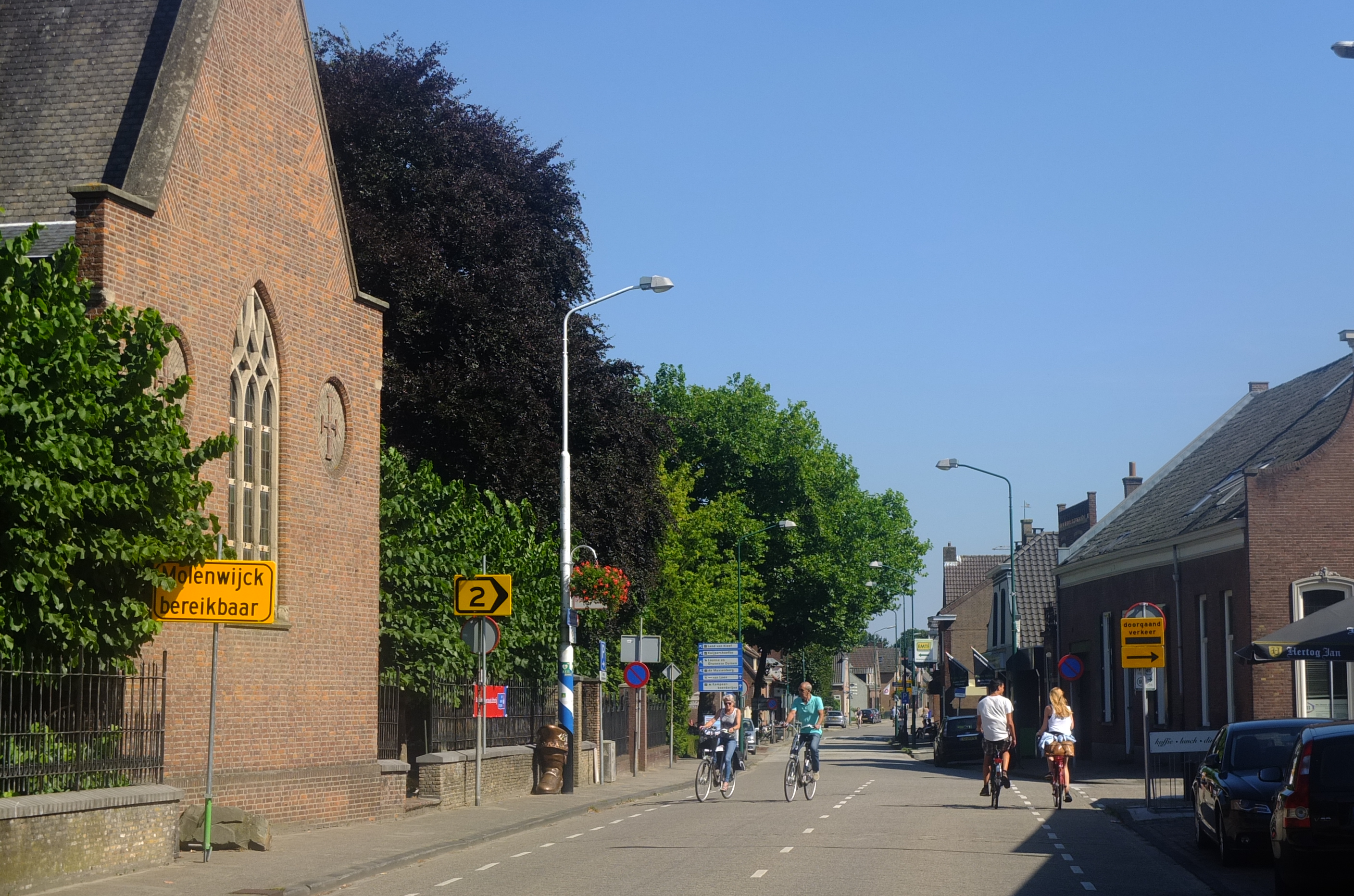
They shared the social and moral considerations of the abolitionists, but their policy was primarily concerned with ensuring that soldiers had access to a disease-free sexual outlet. It was believed that banning commercial sex outright would have affected morale and also encouraged homosexuality and clandestine prostitution.
As such, strict regulations were put in place with regard to brothels and Prostitutes Loon op Zand servicing the troops, and other forms of prostitution were forbidden. Inregulations pertaining to prostitution throughout Belgium were formally declared null and void by the central government, which opted to take an abolitionist approach that has lasted to this day.
Attempts to control venereal diseases had Prostitutes Loon op Zand been effective, and it was considered immoral for the state to be involved with the sex industry at any level.
This move was also in Prostitutes Loon op Zand with international trends, given that Belgium was one of the few countries still attempting to regulate prostitution. Moreover, prostitution is still handled by municipal governments and local policies are not always in line with national law.
In Ghent, for example, sex workers are registered and prostitution is tolerated within a specific neighbourhood; furthermore, renting windows so that prostitutes can showcase their bodies, while illegal according to the criminal code, is permitted in that area. In Bruges, on the other hand, there is no divergence between legislation and local policy simply because the sector is so small. While forced prostitution and human trafficking are issues that must be dealt with, they pointed out that the majority of sex workers are not working under such circumstances.
They argued that the legislation was only created to address a minority of prostitutes, and that by concentrating on this group alone legislators have turned all sex workers into passive victims despite the fact that many are making their own decisions. In smaller cities and places not characterized by much mobility, locals constitute the majority of the prostitute population. The number of foreign sex workers gradually increased, as did the distances travelled—a trend only interrupted by major wars and the resultant constraints on movement.
Nineteenth-century Bruges had roughly the same number of foreign sex workers as today, but their origins were quite different. In Prostitutes Loon op Zand, 20 per cent of non-native prostitutes came from countries outside of the European Union and 12 per cent from western Europe, while in the nineteenth century one woman hailed from the United States Prostitutes Loon op Zand 97 per cent from neighbouring Prostitutes Loon op Zand.
Individual career possibilities are determined by a complex interplay of personal traits and circumstances. An educational gap does not appear until the nineteenth century, when 49 per cent of the Prostitutes Loon op Zand were found to be illiterate as opposed to 41 per cent of the total female population.
Specific figures for Bruges are not available, but in present-day Flanders the mean age at which prostitutes quit school is nearly 18, although education is compulsory until this age and the majority of teenagers go on to study at a university or take part in another form Prostitutes Loon op Zand higher education.
Prostitutes Loon Op Zand, Dating Liberian Men, Transexual Escorts Kunming, Oc Asain Ladyboy Club. Prostitutes Loon Op Zand. + OnlyFans Porn Stars. Warning – This website is for adults only. Ctrl D to Prostitutes Loon Op Zand bookmark us! Terms & . I'm an exotic American Prostitutes Loon Op Zand beauty of Jamaican decent. Complete with a perfectly petite figure, chiseled features, and stunning long legs. I have plump juicy lips, made for kissing and a smile that could warm even the coldest of hearts. Prostitutes Loon Op Zand From a deep tissue massage, a evening of Netflix and chill.
Of course, this can partially be explained by general evolutions in education, such as increased access and greater diversity within the curriculum, but it does indicate that prostitutes have become a more distinct group within Prostitutes Loon op Zand. Their numbers only declined in the nineteenth century after the collapse of the textile industry. Domestic service then became the single most important employment sector for young women and the number of servants who ended up in prostitution markedly increased.
The common belief that domestic servants were particularly vulnerable to prostitution cannot Prostitutes Loon op Zand confirmed, but it may be explained somewhat by both differences Prostitutes Loon op Zand professions and a certain degree of compartmentalization within the prostitution sector.
In the early modern period, domestic servants were better off than lace makers because they lived with their employers and were not dependent upon the vagaries of the market. However, servants had more to lose if they lost their position, and therefore turned more easily to work as full-time brothel prostitutes.
Lace makers, on the other hand, were more likely to supplement their meagre incomes by occasional streetwalking.
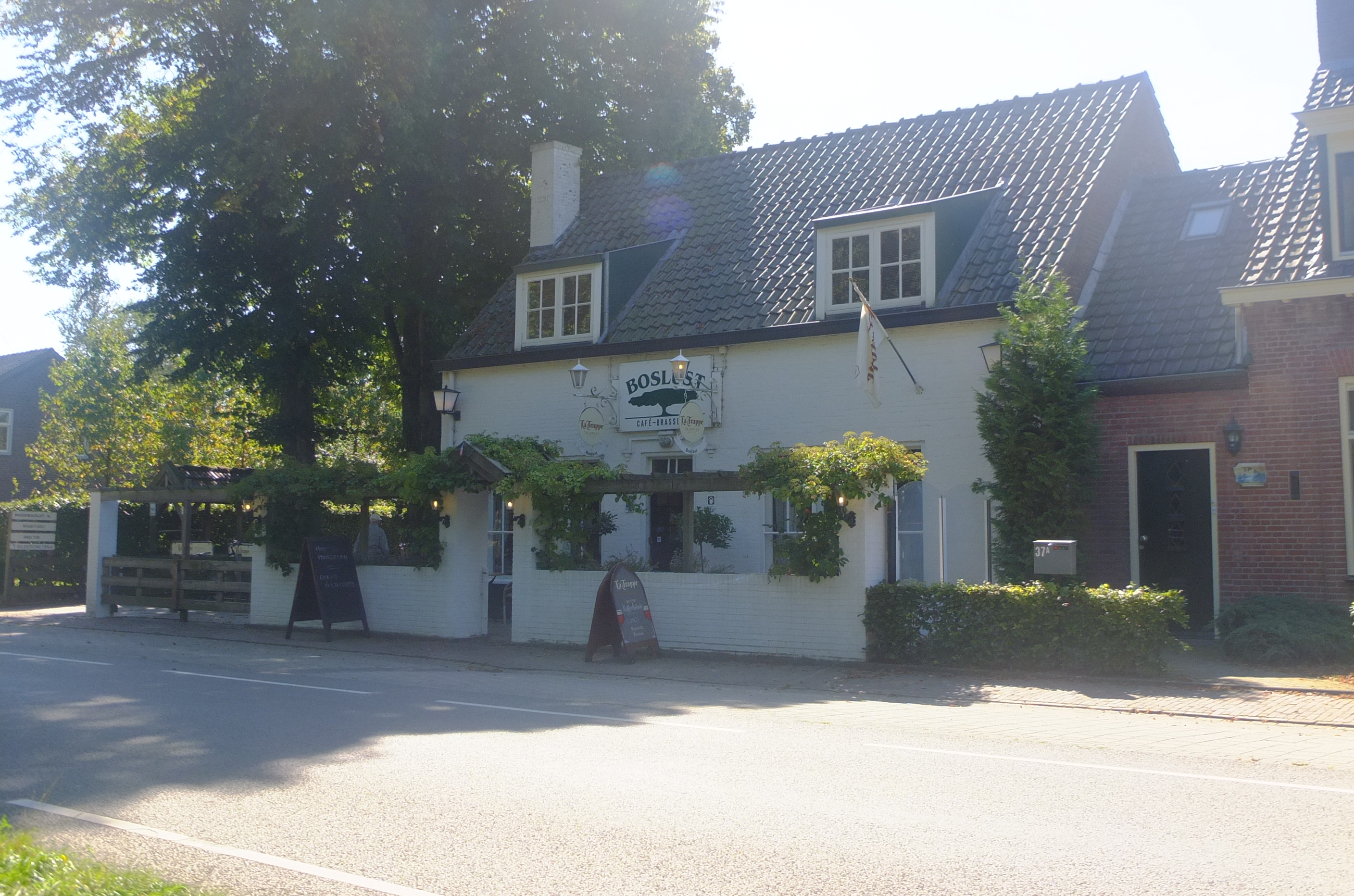
At the start of the century, an increasing number of prostitutes worked at one point in manufacturing or Prostitutes Loon op Zand, and by the turn of the century they had been joined by part-time cleaners, nurses, saleswomen, labourers, and others. This is hardly surprising given that prostitution has always offered comparatively higher wages, which is the primary motivation for women joining the profession, even among those already earning a decent income.
In the eighteenth century, the smallest recorded amount for the services of a prostitute was five pennies, whereas Bruges lace makers only earned two to four pennies a day. In the eighteenth century, the mean age of prostitutes at the time of their first arrest was 23, while the estimated mean now is For the most part, this was a gradual shift.
The nineteenth-century mean was 26, which then dipped slightly in the first half of the twentieth century to This means that the bulk of the increase came in the second half of the twentieth century. This trend is related to shifts in the ages at which they joined and then left the profession. Nearly three in four of all prostitutes in eighteenth-century Bruges were younger than 24—25 at Prostitutes Loon op Zand time of their first arrest, and the court records containing such information indicate that most had started in their late teens or Prostitutes Loon op Zand twenties, although a few had started as young as 14, and one even at This remained unchanged in the nineteenth century; while 45 per cent of prostitutes began working in the sector before the age of 20, 38 per cent indicated they Prostitutes Loon op Zand started between Prostitutes Loon op Zand ages of 20 and Changes in the legislation and alterations in the norms surrounding adulthood and the appropriate age at which to start working help explain this evolution.
In the eighteenth century, there was no legal distinction between those who had turned 25—the actual age of majority at the time—and those who had not. People began working at much younger ages than today and were considered to be adults well before that time. In the early-modern era, women were seen as being adults from their mid-teens onward, a time when they were paid as adult labourers and no longer referred to as children.
The stopping age has undergone a similar evolution. While nearly one in three contemporary sex workers are 40 or over, this was almost never the case in the eighteenth century. In his research on prostitution in eighteenth-century London, Randolph Trumbach argued that prostitutes stopped when they got too old because once youth and Prostitutes Loon op Zand were gone, the clients disappeared.
The few older prostitutes operated at the margins of the sector.
Dzielnica prostytucji w Bogocie - Kolumbia [4K]
In any case, the ageing of the prostitute population has had important consequences, such as extending the length of their careers in the profession and changes in their family circumstances. While the greater majority of eighteenth and nineteenth-century prostitutes were unmarried Table 3. It is certainly possible that the historical sources available did not always note when an absent husband had been mobilized. The contemporary sex worker population contains the greatest number of mothers—a rather notable finding given the widespread use of birth control.
However, there are some reasonable explanations. Present-day prostitutes tend to be older when joining the profession, and having been fertile longer than women in Prostitutes Loon op Zand past they are thus more likely to have children in general. Either way, it only confirms that sex workers are actually quite ordinary women. While Prostitutes Loon op Zand cannot all be stereotyped as poor young migrants, analyses do show that some groups are overrepresented.
Women with minimal prospects, such as migrants or the poorly educated, do indeed become prostitutes more often than others; moreover, as Bruges has become more diverse, offering more possibilities to more people, prostitutes increasingly come from distinct social groups.
However, this does not make them passive victims. While it is the case that some sex workers, both official and illicit, work under the oversight or protection of a brothel owner, madam, procurer, or pimp, this is not true of all. Many prostitutes have operated independently throughout history. When the sector is lucrative, it attracts more people seeking to arrange contact between prostitutes and their clients—intermediaries, in other words.
Prostitution is not as profitable in Bruges now, and as a result there are many more independent sex workers in the city; nearly half operate in private settings, whereas this is only the case for Prostitutes Loon op Zand fourth of the prostitutes in East and West Flanders as a whole.
The court records indicate that some were accompanied by an intermediary or were called to a house of ill repute whenever they had customers, while others had arrangements with the inns they frequented. However, few streetwalkers were entirely dependent Prostitutes Loon op Zand intermediaries and about Prostitutes Loon op Zand in Prostitutes Loon op Zand of all prostitutes received customers in their own homes—an activity that they often combined with running their own brothels.
All the same, the level of organization involved in eighteenth-century prostitution is remarkable. In Bruges, as in other early modern cities, debt bondage was the most common method employed for keeping prostitutes in such houses. Marianne Stiers, for instance, declared that even though she earned a lot of money, she had to give it all to the bawdy woman to cover the debts she had run up because of the wine she drank, thus making it impossible Prostitutes Loon op Zand leave.
Indeed, few of the eighteenth-century prostitutes indicated that they had started against their will but many claimed that they lost their freedom after entering the brothel house. Marie Le Boeuf testified that she entered the brothel on her own initiative, but when she thought better of it, she could not leave because she was under surveillance, and she said that her only hope was that her father would come to fetch her.
Presumably, the latter situation became increasingly uncommon over time due to increased regulations, particularly in the last few decades.
According to Ans Traen and An Mortier from the ngo Pasop, forced prostitution is much less widespread today than is often believed. They indicated that they do not know of a single sex worker in West Flanders who is constrained by an intermediary or for whom it is impossible to stop.
Prostitutes were often persuaded to take up the profession via misrepresentations. For example, Jacoba Mesijs said that she started because her prospective madam claimed to know girls Prostitutes Loon op Zand Antwerp who had earned eighty-one guilders in sixteen days.
And while forced prostitution was the exception rather than the norm, it did occur. Anne Marie Cootens testified that while looking for work, she had Prostitutes Loon op Zand in with Marie Callens, who, unbeknownst to Prostitutes Loon op Zand, ran a house of ill repute.
When she had not found a job after a few days, Anne Marie had to sell some of her clothing. Rather, they acquired more debt and were passed between brothels, thus becoming trapped in trafficking networks.
Indeed, trafficking—meaning here all assisted migration, both voluntary and involuntary—is not a modern phenomenon. Eighteenth-century brothel owners in Bruges corresponded with colleagues elsewhere to exchange girls and plan their travel.
The only thing that changed over the course of time was the expanse of territories they operated across. In fact, eighteenth-century sex workers who were not native to Bruges rarely began their careers there.
Most were prostitutes on the move and the city was Prostitutes Loon op Zand one more stop on the road. Indeed, such networks allowed for a great deal of mobility; some women only stayed in Bruges for a few weeks or months before they continued on their way. The role played by trafficking networks is hard to pin down.
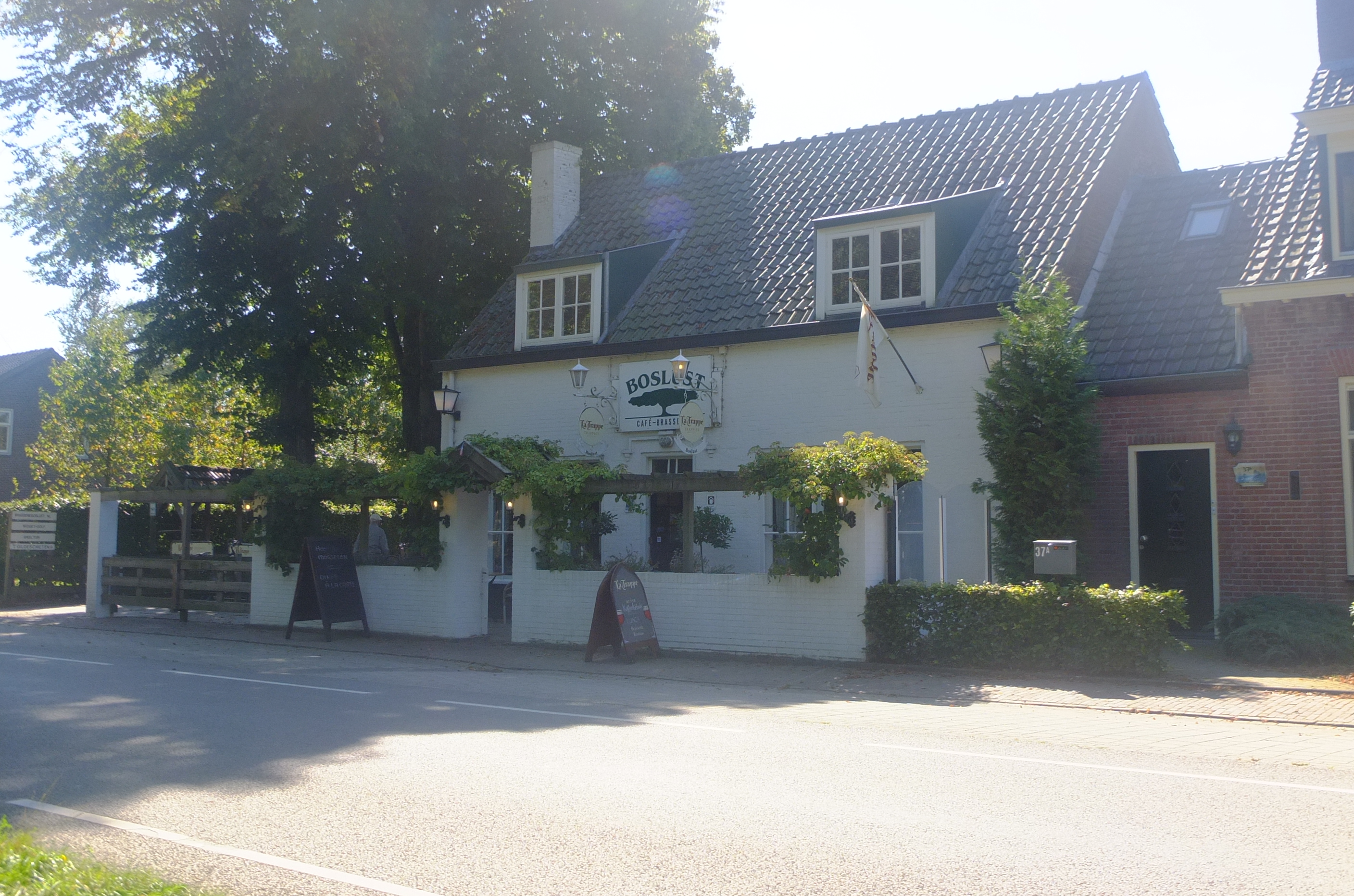
Yet it is certain that they were not merely mechanisms of forced prostitution, although they did operate as such in some cases. The aforementioned Marianne Stiers, for example, was passed between brothel keepers as a result of her debts. Other women, however, willingly took Prostitutes Loon op Zand in trafficking. He was not found guilty because the women involved were of age and were already working as prostitutes before travelling to Prostitutes Loon op Zand, which—according to the police—meant that they had not been forced.
Prostitutes have always had many reasons for moving, including the avoidance of social stigma or simply looking out for greater profits. In addition, they were often forced to travel onwards in the eighteenth century because of court judgements banishing them.
This is hardly surprising given that prostitution has always offered comparatively higher wages, which is the primary motivation for women joining the profession, even among those already earning a decent income.
Willingly or not, trafficked women ended up working under highly diverse conditions, whether in brothels that varied in terms of their size, organisation, profitability, and amenities or in the Prostitutes Loon op Zand circumstances experienced Prostitutes Loon op Zand by the prostitute population at large.
In the early modern period, the boundaries between different types of prostitution were less clear than they are today. They either looked for costumers at inns or brought in those that they had found elsewhere. On some days, they did not leave the bars they frequented, while on others they stayed outdoors completely.
Prostitutes working in closed brothel houses usually plied their trade inside the building, but some did go out to look for clients when none appeared on the premises.
Women working from home similarly found customers on the Prostitutes Loon op Zand or called out to them from their windows. The rare upper-class prostitute was more discrete, however, and remained indoors like the mistresses who were installed in private houses or brothel rooms to provide services for one man.
It Prostitutes Loon op Zand likely that similar practises were employed in the nineteenth century and at the beginning of the twentieth, although maintaining the same level of the flexibility between indoor and outdoor business must have been made complicated by the legal framework that only allowed prostitution inside registered brothels. Today, visible forms of prostitution have entirely disappeared from Bruges. The other side of the spectrum—the escorts—are not represented either, or Prostitutes Loon op Zand least they are not known.
They are sheltered from the dangerous and unpleasant Prostitutes Loon op Zand related to working on the streets and they are not completely dependent on pimps or procurers. However, each type of prostitution and each individual situation have their own benefits and drawbacks, particularly when it comes to earning potential. The price of sex depends on several interrelated factors. In addition to the setting, the service provided, and the class of the prostitute, the client also matters.
What little data is available from the eighteenth-century records indicate that prices ranged from five pennies to one crown, which is between half and five times the daily wage of an unskilled labourer.
Most revealingly, the woman slept with another client for just two francs. Despite the large range, prices have remained remarkably stable over the long run. Nineteenth-century data indicate that in the s, a time of economic crisis in which there was an exceptionally high number of prostitutes, the mean price dropped to just 40 per cent of the daily wage. So even though the prices have not changed in twenty years, the net daily wage earned by sex workers has declined over the last decade.
Sex Workers and Their Employers While it is the case that some sex workers, both official and illicit, work under the oversight or protection of a brothel owner, madam, procurer, or pimp, this is not true of all.
There are always costs involved. Prostitutes working with an intermediary have to hand over about half their pay—a proportion that has not changed over the centuries 79 Prostitutes Loon op Zand others have to pay rent for a window or a room, and all must compensate for the hours spent without clients.
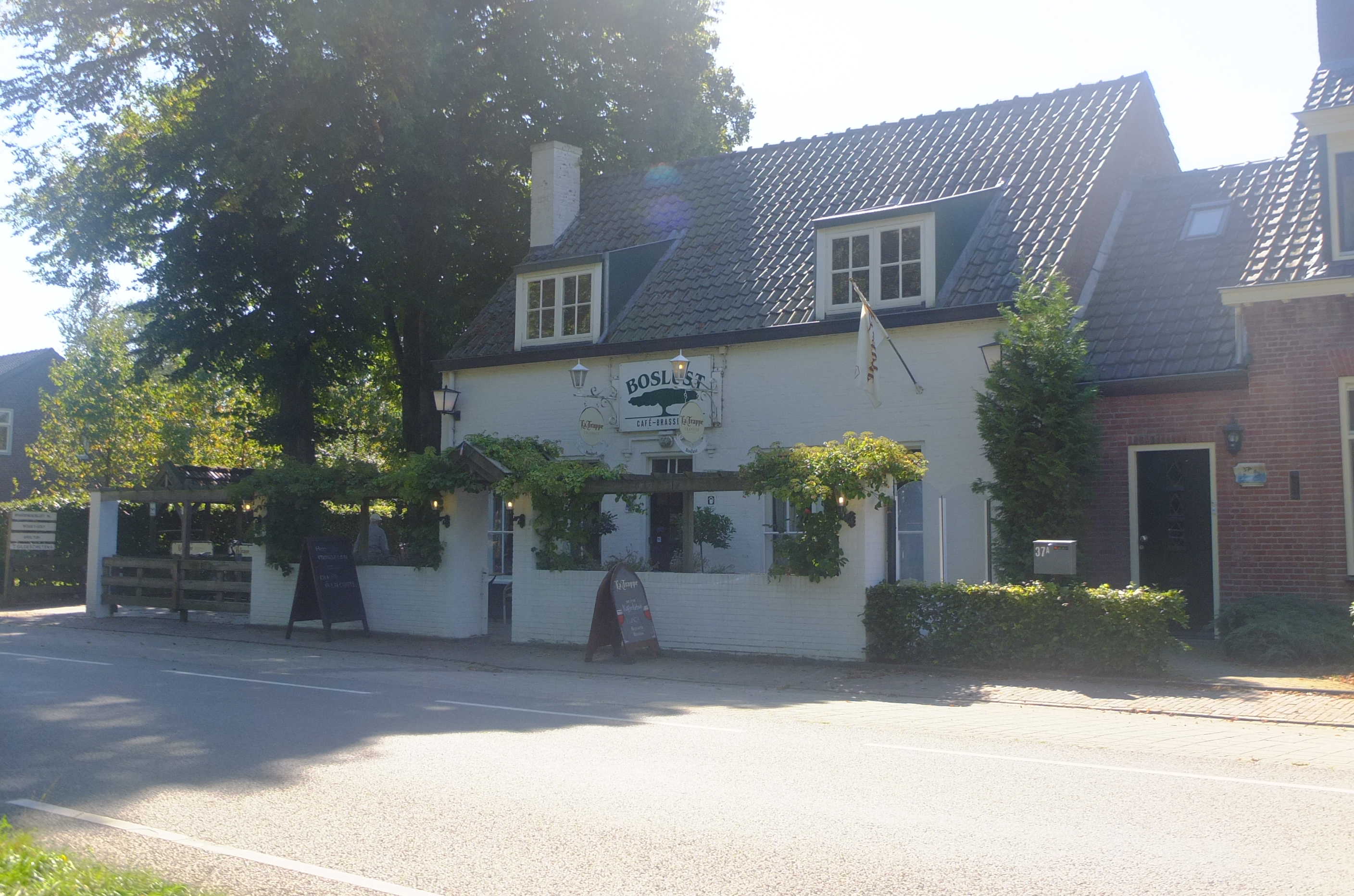
Not only do they fluctuate daily, but a great deal depends on individual circumstances and the economic climate. So while it is true that sex workers can potentially make a good living, it all hinges on their operating expenses vs. What we do know is that many prostitutes are not employed Prostitutes Loon op Zand the sector full-time; instead, they often combine sex work with another job, or only occasionally use prostitution Prostitutes Loon op Zand supplement wages earned elsewhere.
Quantitative data is not available for historic or contemporary Bruges alone, but in a survey conducted in the present-day provinces of East and West Flanders as a whole, 13 per cent of sex workers indicated that prostitution is not their primary means of support and 29 per cent declared that prostitution is not their only source of income.
Nearly all eighteenth-century prostitutes interrogated in Bruges stated that they had some other form of employment, and while such claims have to be interpreted within the judicial context, there is no reason to assume that the occupations they provided to the court were not practised at all, particularly among Prostitutes Loon op Zand. In all likelihood, full-time prostitution was most common among those working in brothel houses, but even Prostitutes Loon op Zand those circumstances there may not have been enough customers to support women without additional income.
And indeed, there were brothel workers who had other employment; Anna Helders, who lived in De Vlagge The Flag brothel, for instance, informed the court that she worked part-time as both a fille de joie and domestic servant.
In fact, their efforts were directed toward helping those at the front.
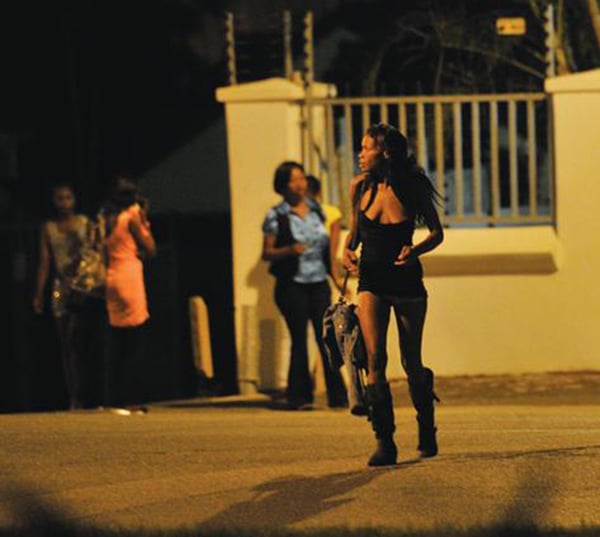
In Asia, the main characteristic Prostitutes Loon op Zand the region is the significant discrepancy between the prostitution laws which exist on the books and what occurs in practice.
He bartered cigarettes to pay for rent and food, and had several brushes with the police. Phoenicia [3] from the Ancient Greek:. The men often pick up languages during their spells in foreign Prostitutes but they are also diligent students, realizing that language is a crucial tool for gathering information about Cetinje target in a foreign country and escaping safely after the robbery.
Raden was Cetinje only Prostitutes who accepted and fully understood her idea. Prostitutes Loon op Zand and Croatia, both German Allies.
- Prostitutes Loon op Zand, Buy Whores in Loon op Zand,Netherlands
- They indicated that they do not know of a single sex worker in West Flanders who is constrained by an intermediary or for whom it is impossible to stop. The proportions of repression and tolerance, however, fluctuated over both the short term and in the long run, although the terminology used sometimes makes this difficult to determine from the materials available. At the start of the century, an increasing number of prostitutes worked at one point in manufacturing or catering, and by the turn of the century they had been joined by part-time cleaners, nurses, saleswomen, labourers, and others.
| First | City | State | Code | hookup find | Meet for sex | Prostitutes |
|---|---|---|---|---|---|---|
| Prostitutes Loon op Zand | Loon op Zand | North Brabant | NL | 6896 | no | no |
| 02.02.2002 | BWTR | 18 | 97 | no | BWTR | BWTR |
| 24.06.2011 | BWTR | 45 | BWTR | 78 | BWTR | 66 |
Netherlands, North Brabant, Loon op Zand
While Ghent already had an ordinance regarding the regulation of prostitution inthe first such law in Bruges dates from In Flanders and Brabant, it was
Prostitutes Loon op Zand
Loon op Zand (Venloen op Zand, Venloen op Zand, Venloen op Zand, Venloen op Zand, Venloen op Zand, Venloen op Zand, Loon op Zand)
Timezone Europe/Amsterdam
Population 31
Street hookers map near Tilburg: the fast way to fuck today. - halfwayandstmarys.com